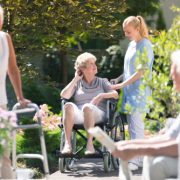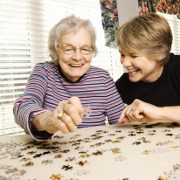Blood Cancer Awareness Month in Memory Care Assisted Living
September is Blood Cancer Awareness Month in the United States, a time dedicated to supporting patients, honoring survivors, and advancing research. For individuals with memory challenges, this observance carries added weight since health concerns may not always be noticed or communicated clearly. Families and caregivers are reminded of their essential role in fostering attentiveness and support within memory care assisted living.
Understanding Blood Cancers & Symptoms
Blood cancer develops when the body produces abnormal blood cells that interfere with the function of healthy cells. These diseases often begin in the bone marrow, where blood cells are formed, and can affect how oxygen is carried, how infections are fought, and how bleeding is controlled. The primary types are leukemia, lymphoma, and myeloma, each of which disrupts blood function in distinct ways.
Below are some of the common signs and symptoms linked to blood cancer:
- Fatigue
- Shortness of breath
- Swollen lymph nodes
- Frequent infections
- Bone pain
- Night sweats
- Enlarged liver or spleen
- Joint pain
- Persistent fever
- Unexplained weight loss
- Unusual bruising or bleeding
For residents in memory care assisted living, these symptoms may not always be clearly reported, making close observation by caregivers vital in detecting potential concerns. Therefore, this reality underscores the need for vigilance and proactive healthcare in supporting older adults at risk of serious illness.
Challenges in Detection for Memory Care Residents
As if living with blood cancer were not already challenging, the task of detecting or diagnosing it becomes far more complicated for individuals residing in memory care assisted living communities. Many residents are already coping with cognitive decline, which can blur the lines between regular memory-related changes and signs of a serious illness. Subtle health issues that might otherwise raise concern can go unnoticed or misunderstood, leading to delays in evaluation and treatment.
Here are some of the unique challenges in detection for memory care residents:
- Difficulty communicating new or unusual symptoms
- Misattributing changes to dementia rather than illness
- Limited ability to describe pain or discomfort
- Short medical visits that miss subtle warning signs
- Family or staff overlooking gradual health changes
These challenges underscore the reality that detection depends heavily on observation, patience, and consistent monitoring from caregivers and healthcare providers. So, without heightened awareness, opportunities for timely intervention may be lost, making vigilance an essential part of resident care.
Community Activities for Awareness
Awareness months lose their impact when the surrounding community is not engaged. For Blood Cancer Awareness Month, participation from facility staff, relatives, and friends helps make the observance meaningful for residents. Creating opportunities to connect, learn, and support one another ensures that the focus goes beyond recognition and becomes a source of comfort and education.
Here are some suggested community activities for awareness:
- Wearing and displaying awareness ribbons
- Hosting educational talks for staff and families
- Organizing family nights with themed activities
- Inviting local health professionals for Q&A sessions
- Setting up art projects that highlight hope and resilience
- Encouraging residents to share personal stories with caregiver assistance
- Holding a remembrance ceremony for those affected by blood cancer
When thoughtfully planned, these activities can strengthen bonds, foster understanding, and cultivate a supportive culture within assisted living communities during Awareness Month.
Are you in need of senior care in Nebraska? Click here to learn all about Oxbow Living!
Oxbow Living offers Assisted Living & Memory Care out of Nebraska and to the Surrounding Cities: Ashland, South Bend, Greenwood, Murdock, Elmwood, Ithaca, Mead







